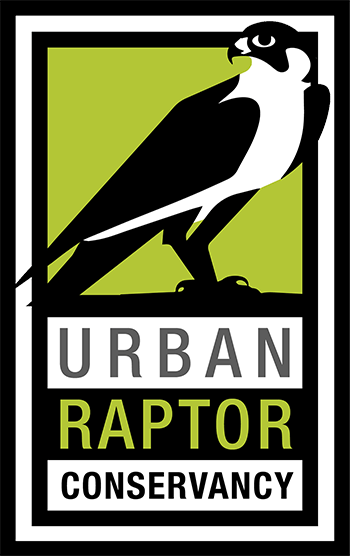“It can legitimately be argued that urban ecosystems are the only type of ecosystem that is increasing on the planet.”
Boal & Dysktra (Eds.)
Urban Raptors
About URC
Welcome
At Urban Raptor Conservancy, we recognize that human diversity is a part of the robust biodiversity essential to a healthy ecosystem. Our mission—to foster widespread understanding and appreciation of raptors in our cities—includes everyone. Raptors need all of us to thrive in our urban community. Regardless of your age, race, ethnicity, sexual orientation, gender identity, or religious belief, we welcome your interest and participation.
Mission
Our mission is to document challenges and benefits of urban raptors in the Puget Sound region to learn how to better coexist with them in a human-altered world. We foster widespread understanding and appreciation of raptors as valuable and valued members of our urban environment.
Strategy
We work to accomplish our mission through research, community education, and conservation.
- Research. We monitor urban raptors and how they respond to human-altered landscapes, and we report what we learn.
- Community education. We inform people about the presence and value of our urban raptor neighbors and the concerns unique to raptors in cities. We train and mentor volunteers in techniques to survey, monitor, and track raptors in Seattle and the Puget Sound region.
- Conservation. Our long-term monitoring of urban raptors helps us to identify, evaluate, and minimize potential human-raptor conflicts. We collaborate and cooperate with wildlife professionals, government agencies, property owners, and the public to develop best management practices to safeguard raptors.
Our History: Why Urban Raptors?
URC arose from two long-term monitoring studies of urban raptors. The Seattle Peregrine Project had a thrilling beginning in 1994 as peregrine falcons were recovering from near-extinction from DDT and began to show up in cities. The Seattle Cooper’s Hawk Project, begun in 2004, revealed the abundance of these elusive raptors in Seattle, allowing many opportunities to observe their mating and nesting behavior and underscoring the importance of an urban tree canopy. Monitoring peregrines and Cooper’s hawks for many years opened our eyes to a new view of our city: how these raptor species live in it, and how their circumstances change over time.
Raptors and other wildlife are moving into an urban frontier, driven by shrinking rural habitat and attracted by the habitats and resources that cities offer. Peregrines like tall buildings, bridges, and pigeons. Cooper’s hawks favor parks and eat songbirds, rats, squirrels, and rabbits.
But raptors also run into conflicts unique to urban habitats. Bridge-nesting peregrine fledglings often drown. Many city raptors hit windows or are hit by cars. Raptors may weaken or die from eating poisoned rats.
We are learning how these benefits and conflicts affect raptors in the urban environment, both now and as they change over time. The health or decline of urban raptors can tell us much about changes in the urban environment that affect them—which may in turn affect humans, too, because our ecological fates are often intertwined. These questions have only begun to be studied.
We formed Urban Raptor Conservancy to document our work and that of others who study raptors in our region, publicize what we’ve learned, and promote stewardship of raptors in our dynamic urban environment.
